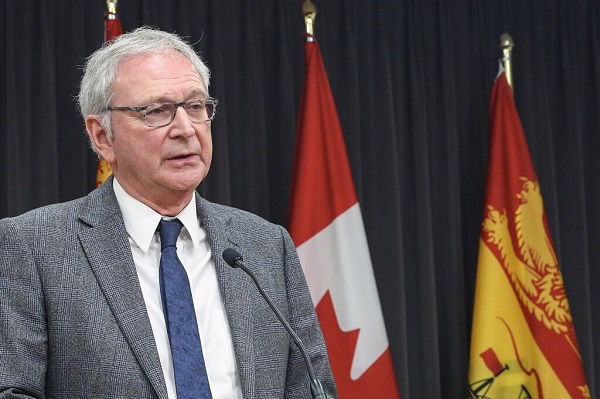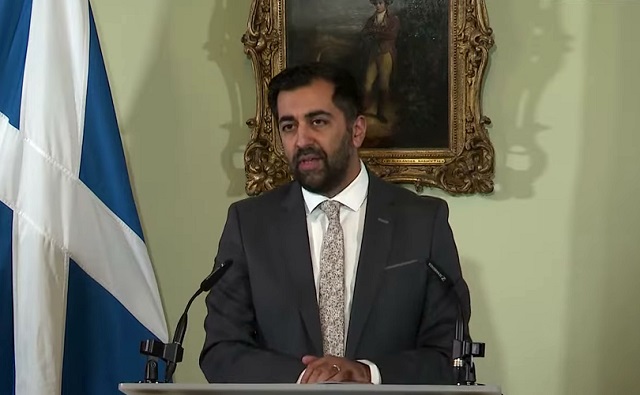Brownstone Institute
Covid was Spreading Across the U.S. in 2019

BY
If it could be proven that the virus that causes COVID-19 was spreading throughout the world by November 2019 (or even earlier), the shift in the Covid narrative might be seismic.
For example, if the virus had already infected large numbers of people, the justification for the lockdowns of mid-March 2020 to “slow or stop the spread” of a newly arrived virus would be shown to be nonsense.
Estimates of the number of people who had already developed natural immunity as well as of the infection fatality rate (IFR) might be dramatically different. It would suggest the disease was not nearly as lethal as experts proclaimed. The mass fear in the public – a prerequisite for lockdowns and later for mass vaccinations – might be much lower.
Given these points, it’s odd public health officials and investigative journalists have eschewed serious investigations that might confirm this virus had already spread around the world before January 1st, 2020.
A common-sense project to ‘prove’ early spread was occurring would be simply to test tranches of blood that were donated before the birth date of the official outbreak (December 31st 2019).
Surprisingly, however, very few antibody studies of archived blood collected before December 31st 2019 have occurred. Will Jones of The Daily Skeptic recently highlighted one such study published by researchers in France as well as a sewage study from Brazil. The first provides antibody evidence and the second RNA evidence the novel coronavirus was spreading by November 2019 in these countries.
To Will’s list, I’d add the only antibody study of archived Red Cross blood conducted by the US CDC to date. This study found 39 antibody-positive serum samples collected December 13th-16th, 2019 in California, Washington and Oregon (2% of blood samples collected from these states tested positive for antibodies).
As it takes the human body one to two weeks to produce detectable levels of antibodies, most of these 39 antibody-positive donors had been infected in November 2019 if not earlier.
For some reason, American officials performed only one antibody study of blood collected by blood bank organizations. It’s also strange that results of this study were not published until November 30th, 2020 – more than 11 months after the first tranche of archived Red Cross blood had been collected.
In a CDC press briefing held May 29th, 2020, CDC officials stated they’d searched for and could find no evidence the novel coronavirus had been “introduced” anywhere in America prior to January 20th, 2020.
I believe this statement was false, as by the time this press briefing was held, copious evidence of early spread had already been disseminated via published news accounts. For example, I’ve identified at least 17 Americans who were sick with definite Covid symptoms in November and December 2019 and all 17 had antibody evidence of prior infection. Also, all 17 of these reports were published by prominent news organizations at least 13 days before this press conference.
While a source of important evidence, antibody studies are not necessary to prove that early spread almost certainly occurred in America. Close examination of individual case histories also allows one confidently to reach this conclusion. What follows is a summary of three individual histories that lead me to conclude community spread was already occurring in America by November 2019 and probably October 2019.
For details on other American cases that date to December 2019, see this Seattle Times story and a feature story I wrote that, for some reason, was completely ignored by the mainstream press and public health officials, a fact I document in this follow-up article.
Case 1: Michael Melham of Belleville, NJ
Michael Melham, the Mayor of Belleville, NJ, was among a large group of New Jersey municipal employees who attended a conference in Atlantic City on November 19th-21st 2019. While at the conference, Melham experienced symptoms common to COVID-19.
“I was definitely feeling sick when I was there, and fought my way through it,” Mayor Melham told NJ Advance Media on April 30th, 2020.
“I have never been sicker in my entire life,” the Mayor said. “These symptoms included a 102-degree fever, chills, hallucinations and a sore throat that lasted for three weeks.” In a story published by Fox News, Mayor Melham said the illness made him feel “like a heroin addict going through withdrawals… I didn’t know what was happening to me. I never felt that I could be so sick.“
Mayor Melham felt sick enough to contact his doctor who diagnosed him with the flu. However, this diagnosis was given “over the phone” and Melham never actually received a flu test.
In late April 2020, Melham visited his doctor for his annual physical and brought up his November illness. The doctor administered an antibody test, which came back positive for Covid antibodies.
Melham later told me he actually received two positive antibody tests (previous reports mentioned just one).
“My first antibody test was a rapid test. My second was a blood test that was sent to a lab. Both were positive for the longer antibody,” Mayor Melham wrote in one email.
Mayor Melham has repeatedly made the important (if ignored) point that he tested positive for the ‘long’ (IgG) antibody. He tested negative for the IgM antibody. The presence of IgM antibodies indicate more recent infection and, per studies, these antibodies fade and are only detectable for about a month after infection.
This combination of antibody results would seem to rule out the possibility Mayor Melham experienced an asymptomatic case of Covid in the month before receiving his first antibody test. The only time Melham was sick was November 2020.
He added: “I will also tell you that since the media attention surrounding my claim, many others have come forward. I have emails from those who were actually at the same conference in Atlantic City NJ, who became just as sick as I was.”
Those who wish to gauge the credibility of the Mayor’s claims can view this four-minute YouTube interview with Mayor Melham.
I also asked Mayor Melham a question no other journalist seems to have asked him. “Did any public health official ever contact you to investigate your possible case?”
Melham’s email response: “No, nothing.”
DISCUSSION
Multiple acquaintances as well as his physician would confirm Melham was sick with symptoms common to Covid victims in November. Since he received two positive antibody tests, if the results were a false positive, he received two false positives.
As noted, Mayor Melham reports receiving emails from “multiple people… who were at the same conference who became just as sick as I was”. This would suggest the presence of community spread – a possibility which might have been confirmed if contact tracers had tested the people who’d been sick at the same conference for antibodies.
We know no public health officials contacted Mayor Melham to investigate his claim. We also know, thanks to nj.com‘s reporting, that state health officials were aware of his claim:
“Asked about the Mayor’s statements, the state health department declined comment. A spokesperson for Gov. Phil Murphy did not immediately respond to a message.”
The following points should also be emphasized. If his diagnosis had been confirmed by public health officials, Mayor Melham would have been the first known Covid case in the world, and would have been the first confirmed case in America by approximately 61 days (the first official case in America is still recorded as January 20th, 2020 – a man from Washington state who had recently returned from Wuhan).
Significantly, Mayor Melham can date the onset of his symptoms. Per numerous studies, it takes two to 14 days after infection for symptoms to manifest. This means Mayor Melham would have been infected some time between November 5th and November 19th, 2019.
Since Mayor Melham did not give the virus to himself, logic tells us the chain of transmission that ended with Michael Melham being symptomatic around November 20th, 2019 very possibly began before November 1st, 2019. This would mean that community spread was possibly occurring in New Jersey as early as October 2019.
Case 2: Uf Tukel of Delray Beach, Florida
As reported by the Palm Beach Post on May 16th, 2020:
“At least 11 people… on two small blocks alone… in a small Delray Beach (Florida) neighborhood tested positive for coronavirus antibodies in April. They felt symptoms as early as November (2019). “It didn’t have a name back then, but I have no doubt now that it was the coronavirus,” one neighbor said.”
The article names seven of these individuals and provides details and quotes about their symptoms. These seven people include Uf Tukel who was “first among (residents of the neighborhood) to feel sick in late November (2019)… For weeks, he had body aches, a severe cough and night sweats.”
While “Tukel is reluctant to say he had the coronavirus a month before Chinese officials reported the outbreak to the World Health Organisation, ‘I had all the symptoms though,’ Tukel said.”
The same logic applied to Michael Melham’s possible case would apply to Mr. Tukel’s possible case. That is, the unknown person who infected Mr. Tukel was infected earlier than Tukel, and the unknown person who infected this person contracted the virus even earlier, suggesting early spread was also happening by some point in November, if not October, in Delray Beach, Florida.
If confirmed, Mr. Tukel’s case would indicate that American cases in November were not isolated to the state of New Jersey.
Several other points included in the Post’s coverage deserve attention.
These possible Delray Beach cases include two couples, with one spouse presumably infecting the other. One child of one of these couples became infected, providing further evidence of community spread.
According to the story, none of the individuals experienced close contacts with other non-family residents of the same neighborhood. That is, there seems to be no evidence of neighbor-to-neighbor transmission.
According to the story, “all (11 individuals) recovered and haven’t been sick since.” None of the 11 had travelled to China.
Like Michael Melham, none of these 11 people tested positive for the ‘short’ (IgM) antibodies – thus none had been recently infected.
The Post article also includes this eye-opening information: “Since March (2020) about two-fifths (approximately 200, 40%) of the 500 antibody tests taken by Xera Med (a DelRay Beach private testing lab/medical clinic) have been positive, said CEO Emily Rentz.” The first two confirmed cases in Florida were recorded March 1st.
The following sentence from this article might be even more significant: “The lab shares its data on positive tests with the state health department, (Rentz) added.”
And from the same article: “The state wouldn’t say whether it is collecting antibody data from hospitals or private laboratories.”
The Post article referenced a May 5th article by the same newspaper:
“In Florida, health department reports show patients who eventually tested positive for the virus experienced symptoms as early as January. The Florida Department of Health hasn’t explained those potential fault lines in the state’s assertion that the first cases didn’t appear in Florida until March.”
The fact 40% of 500 antibody tests administered by the clinic between March and early May 2020 tested positive for Covid antibodies suggests infections were widespread in this community. And according to the CEO of this lab, these antibody results were being shared with Florida State Department of Health officials.
And apparently these weren’t the only positive antibody results that were being reported by testing labs. As reported in the same article:
The University of Miami, in randomly testing Miami-Dade County residents for antibodies, has found that the rate of infection could be 16 times higher than state data suggests, said Dr. Erin Kobetz, a professor and lead researcher on the project …
“Since first publishing her findings, Kobetz has heard from several people who shared experiences similar to the Tropic Isle neighbors… They described being sick in December and later testing positive for antibodies. They asked if what they’d experienced was COVID-19.”
Significantly, if we count possible December 2019 cases, Americans from five geographically-dispersed US states were featured in published articles. An unknown number of Americans who’ve never been featured in a newspaper article undoubtedly fit the same profile. If one adds this unknown number of never-identified people to the list of known individuals, evidence the novel coronavirus was spreading widely across America in November and December 2019 becomes even more compelling.
Not every infectious disease expert agrees with the CDC’s assessment that widespread transmission did not begin until January 20th, 2020.
“It’s possible that the disease spread as early as November,” Dr. Kobetz said.
As in New Jersey, apparently no official with the Florida Department of Health contacted any of the 11 people referenced in the Post’s article. Nor have public health officials apparently followed up with Emily Renz, CEO of Xera Med, who stated approximately 200 other local residents received positive Covid antibody tests at the clinic between March and the end of April.
Ms. Renz noted that information on all of these positive test results had been forwarded to officials at the state’s health agency. Which prompts this question: How many clinics and testing labs in America also forwarded positive antibody test results to state health agencies, agencies which presumably could and would pass this information along to their colleagues at the CDC or NIH?
What the public doesn’t know but should is how many other Americans – those with lab results not reported in the press – also tested positive for antibodies between March and early May 2020. Presumably, the CDC and state and local health agencies have these data, which have never been released to the public.
Indeed, I’ve come to believe it’s possible at least some high-ranking officials may have conspired to suppress antibody results which, if published, might have led the public to conclude this virus was spreading widely months before officials said it had been introduced in this country. Such knowledge might have changed the way tens of millions of Americans evaluated their personal Covid risk as well as their support for lockdowns.
Case 3: Shane from Marin County, California
Perhaps the first early case in America (with antibody evidence that would confirm infection) is Shane of Marin County, California. Shane’s possible early case was not featured in a newspaper article, but by Shane himself in the reader comments section that followed a May 7th 2020 New York Times story (the story describes symptoms experienced by Covid patients).
Writes Shane: “I had COVID-19 last fall, far earlier than anyone else I’ve heard of. I suspect I caught it while on an overseas trip to Italy and the Middle East – I’ve taken two antibody tests in the past month, both of which confirmed I was infected.”
As Shane recounts, he was extremely sick with signature Covid symptoms.
“For me the worst symptom by far was the dry, unproductive cough. The cough was so intense, so relentless, it left me with bruised ribs and a horrible searing pain in my chest, which also felt as if someone were sitting on it. The fever at one point reached 104.9 upon which I began hallucinating – seeing my dogs talking to me and forgetting how to open a sliding glass door. Horrible chills which led to my teeth chattering so hard my jaw ached were also another noxious gift of Covid.
“What I most remember about my experience with Covid is pain, pain from coughing, pain in my body and head, pain everywhere around me, like a smothering red blanket. At times I felt I was going to die during that week and even today I must admit I am surprised I didn’t.”
Adding credibility to his claim, Shane’s post cited two labs where he claims to have received his positive antibody tests.
“The local health centre in West Marin is where I took the latest one. The other one I took directly at the manufacturer’s location – ARCpoint Labs in Richmond. That one is only 87% accurate and not FDA approved so that’s why I took the more recent one, which was done through Quest Labs I believe.”
In the comment thread, one poster suggests it’s unlikely Shane developed Covid as there had been no reported confirmed cases from that time. This poster opines that Shane was sick with some other nasty virus and later developed an asymptomatic case of Covid. However, Shane stuck to his theory and presented reasons for his opinion.
“I suppose it’s possible but I tend to think that since what I contracted had the exact same symptoms as COVID-19 – that COVID-19 is what I had. In addition, mid-February through mid-March I was in isolation, caring for my sister who died mid-March from metastatic cervical cancer. When COVID-19 made its first appearance in the U.S. in February we very quickly put in strict isolation protocols as my sister had a compromised immune system due to chemotherapy, further insulating myself from contact and infection as well.”
Shane does not report what month he thinks he had Covid – only that it was “last fall… and far earlier than anyone else I’ve heard.” He could have been sick in November or October (maybe even late September). Shane (if he really had Covid) contracted the virus from an unknown person who would have been infected earlier than him.
Shane shared his belief he might have contracted the virus in Italy or in the Middle East, which, if true, would provide more evidence of early global spread. However, it’s also possible he contracted the virus in California.
Shane’s claim was posted in the moderated New York Times’ comments section, meaning one or more Times employees were aware of Shane’s startling claim. I imagine any Covid article, including the popular reader comments, published by the New York Times was also read by at least some employees of the CDC, NIH etc.
As only paid subscribers can make comments in the New York Times comment section, the newspaper possesses Shane’s subscription information. That is, someone at the newspaper could have easily ascertained Shane’s full name and contact information, including his street and email address.
For what it’s worth, I contacted the NY Times via its news tip email address and suggested a reporter follow up on Shane’s eye-opening claim. I did not receive a reply. This leads me to believe the New York Times is not interested in pursuing evidence of early spread in America, even in the case of a person who very well could be the first known Covid case in the world.
Conclusion
At least three Americans (either known, or in Shane’s case, easily identifiable if effort was made) possessed antibody evidence of Covid in November 2019. The infection chain that ultimately produced these symptomatic individuals likely traces to October 2019. Of note, two of these individuals received two positive antibody tests, making a false positive explanation far less likely. These cases occurred not in one state, but three states (New Jersey, Florida and California). Americans from at least 12 US states had antibody evidence of infection prior to mid-January 2020.
As far as I know, none of these 123 Americans (17 Americans identified in press reports and 106 in the Red Cross antibody study) had travelled to China. All 123 are either known or could be identified. (For unstated reasons, the CDC did not interview any of the 106 Americans who provided positive blood samples to the Red Cross.) The figure 123 does not include the unknown individuals who infected these Americans, nor does it include the possible cases that never became known to reporters or the public.
This antibody evidence strongly suggests the novel coronavirus was being transmitted person-to-person throughout the United States well before January 1st, 2020, and was probably occurring by October 2019.
If certain officials concealed this truth or were simply too incompetent to figure it out, any trust placed in such authorities is undermined. The above information also suggests that officials are not interested in conducting serious investigations into early spread of the virus, prompting a skeptic to wonder why this might be the case.
My hope is that journalists with more resources than myself, as well as officials and scientists, will belatedly and seriously investigate the strangely-ignored evidence of early spread.
This story also appeared in The Daily Skeptic.
Brownstone Institute
The WHO’s Proposed Pandemic Agreements Worsen Public Health

From the Brownstone Institute
BY
The WHO decided that the response for a Toronto aged care resident and a young mother in a Malawian village should be essentially the same – stop them from meeting family and working, then inject them with the same patented chemicals.
Much has been written on the current proposals putting the World Health Organization (WHO) front and center of future pandemic responses. With billions of dollars in careers, salaries, and research funding on the table, it is difficult for many to be objective. However, there are fundamentals here that everyone with public health training should agree upon. Most others, if they take time to consider, would also agree. Including, when divorced from party politicking and soundbites, most politicians.
So here, from an orthodox public health standpoint, are some problems with the proposals on pandemics to be voted on at the World Health Assembly at the end of this month.
Unfounded Messaging on Urgency
The Pandemic Agreement (treaty) and IHR amendments have been promoted based on claims of a rapidly increasing risk of pandemics. In fact, they pose an ‘existential threat’ (i.e. one that may end our existence) according to the G20’s High Level Independent Panel in 2022. However, the increase in reported natural outbreaks on which the WHO, the World Bank, G20, and others based these claims is shown to be unfounded in a recent analysis from the UK’s University of Leeds. The main database on which most outbreak analyses rely, the GIDEON database, shows a reduction in natural outbreaks and resultant mortality over the past 10 to 15 years, with the prior increase between 1960 and 2000 fully consistent with the development of the technologies necessary to detect and record such outbreaks; PCR, antigen and serology tests, and genetic sequencing.
The WHO does not refute this but simply ignores it. Nipah viruses, for example, only ‘emerged’ in the late 1990s when we found ways to actually detect them. Now we can readily distinguish new variants of coronavirus to promote uptake of pharmaceuticals. The risk does not change by detecting them; we just change the ability to notice them. We also have the ability to modify viruses to make them worse – this is a relatively new problem. But do we really want an organization influenced by China, with North Korea on its executive board (insert your favorite geopolitical rivals), to manage a future bioweapons emergency?
Irrespective of growing evidence that Covid-19 was not a natural phenomenon, modelling that the World Bank quotes as suggesting a 3x increase in outbreaks over the next decade actually predicts that a Covid-like event will recur less than once per century. Diseases that the WHO uses to suggest an increase in outbreaks over the past 20 years, including cholera, plague, yellow fever, and influenza variants were orders of magnitude worse in past centuries.
This all makes it doubly confusing that the WHO is breaking its own legal requirements in order to push through a vote without Member States having time to properly review implications of the proposals. The urgency must be for reasons other than public health need. Others can speculate why, but we are all human and all have egos to protect, even when preparing legally binding international agreements.
Low Relative Burden
The burden (e.g. death rate or life years lost) of acute outbreaks is a fraction of the overall disease burden, far lower than many endemic infectious diseases such as malaria, HIV, and tuberculosis, and a rising burden of non-communicable disease. Few natural outbreaks over the past 20 years have resulted in more than 1,000 deaths – or 8 hours of tuberculosis mortality. Higher-burden diseases should dominate public health priorities, however dull or unprofitable they may seem.
With the development of modern antibiotics, major outbreaks from the big scourges of the past like Plague and typhus ceased to occur. Though influenza is caused by a virus, most deaths are also due to secondary bacterial infections. Hence, we have not seen a repeat of the Spanish flu in over a century. We are better at healthcare than we used to be and have improved nutrition (generally) and sanitation. Widespread travel has eliminated the risks of large immunologically naive populations, making our species more immunologically resilient. Cancer and heart disease may be increasing, but infectious diseases overall are declining. So where should we focus?
Lack of Evidence Base
Investment in public health requires both evidence (or high likelihood) that the investment will improve outcomes and an absence of significant harm. The WHO has demonstrated neither with their proposed interventions. Neither has anyone else. The lockdown and mass vaccination strategy promoted for Covid-19 resulted in a disease that predominantly affects elderly sick people leading to 15 million excess deaths, even increasing mortality in young adults. In past acute respiratory outbreaks, things got better after one or perhaps two seasons, but with Covid-19 excess mortality persisted.
Within public health, this would normally mean we check whether the response caused the problem. Especially if it’s a new type of response, and if past understanding of disease management predicted that it would. This is more reliable than pretending that past knowledge did not exist. So again, the WHO (and other public-private partnerships) are not following orthodox public health, but something quite different.
Centralization for a Highly Heterogeneous Problem
Twenty-five years ago, before private investors became so interested in public health, it was accepted that decentralization was sensible. Providing local control to communities that could then prioritize and tailor health interventions themselves can provide better outcomes. Covid-19 underlined the importance of this, showing how uneven the impact of an outbreak is, determined by population age, density, health status, and many other factors. To paraphrase the WHO, ‘Most people are safe, even when some are not.’
However, for reasons that remain unclear to many, the WHO decided that the response for a Toronto aged care resident and a young mother in a Malawian village should be essentially the same – stop them from meeting family and working, then inject them with the same patented chemicals. The WHO’s private sponsors, and even the two largest donor countries with their strong pharmaceutical sectors, agreed with this approach. So too did the people paid to implement it. It was really only history, common sense, and public health ethics that stood in the way, and they proved much more malleable.
Absence of Prevention Strategies Through Host Resilience
The WHO IHR amendments and Pandemic Agreement are all about detection, lockdowns, and mass vaccination. This would be good if we had nothing else. Fortunately, we do. Sanitation, better nutrition, antibiotics, and better housing halted the great scourges of the past. An article in the journal Nature in 2023 suggested that just getting vitamin D at the right level may have cut Covid-19 mortality by a third. We already knew this and can speculate on why it became controversial. It’s really basic immunology.
Nonetheless, nowhere within the proposed US$30+ billion annual budget is any genuine community and individual resilience supported. Imagine putting a few billion more into nutrition and sanitation. Not only would you dramatically reduce mortality from occasional outbreaks, but more common infectious diseases, and metabolic diseases such as diabetes and obesity, would also go down. This would actually reduce the need for pharmaceuticals. Imagine a pharmaceutical company, or investor, promoting that. It would be great for public health, but a suicidal business approach.
Conflicts of Interest
All of which brings us, obviously, to conflicts of interest. The WHO, when formed, was essentially funded by countries through a core budget, to address high-burden diseases on country request. Now, with 80% of its use of funds specified directly by the funder, its approach is different. If that Malawian village could stump up tens of millions for a program, they would get what they ask for. But they don’t have that money; Western countries, Pharma, and software moguls do.
Most people on earth would grasp that concept far better than a public health workforce heavily incentivized to think otherwise. This is why the World Health Assembly exists and has the ability to steer the WHO in directions that don’t harm their populations. In its former incarnation, the WHO considered conflict of interest to be a bad thing. Now, it works with its private and corporate sponsors, within the limits set by its Member States, to mold the world to their liking.
The Question Before Member States
To summarize, while it’s sensible to prepare for outbreaks and pandemics, it’s even more sensible to improve health. This involves directing resources to where the problems are and using them in a way that does more good than harm. When people’s salaries and careers become dependent on changing reality, reality gets warped. The new pandemic proposals are very warped. They are a business strategy, not a public health strategy. It is the business of wealth concentration and colonialism – as old as humanity itself.
The only real question is whether the majority of the Member States of the World Health Assembly, in their voting later this month, wish to promote a lucrative but rather amoral business strategy, or the interests of their people.
Brownstone Institute
Medical Elites’ Disgrace Over Ivermectin

From the Brownstone Institute
BY
In the wake of the FDA settling a lawsuit brought against it for wantonly and aggressively smearing ivermectin, the agency has deleted its postings. That’s good, but we shouldn’t forget how egregiously it mischaracterized the drug, ignored copious evidence in its favor, and portrayed its proponents as dangerous crackpots.
About 30 months ago, America’s FDA was publishing articles with headlines like this: “Should I take ivermectin to treat COVID?” Answer: No. The agency also told Americans not to use ivermectin to prevent Covid. Then, in what became known as its infamous “horse tweet,” the FDA even patronizingly told Americans: “Seriously, y’all. stop it.”
Prescribers who advocated for alternate treatments like ivermectin or hydroxychloroquine were mocked online by America’s “trusted journalists” as being part of a “right-wing conspiracy” and labeled “hucksters.” Those who didn’t demure to the Covid mRNA or other Big Pharma treatment narratives were banned, fired, and spoken harshly about around the world and into the reaches of the stratosphere in what seemed like coordinated messaging.
Many clinicians lost their jobs – at best. At worst, their reputations, practices, finances, and careers were shattered. If that was not bad enough, after losing their jobs, state medical and pharmacy boards initiated legal proceedings against their licensure, singling out their “off-label” Covid treatments, despite other off-label treatments being a near-ubiquitous component of pharmacy and medical practice.


Within days of FDA’s initial postings above, the American Pharmacist’s Association (APhA) the American Society of Health System Pharmacists (ASHP), and the American Medical Association (AMA) all collaborated to release a joint press release condemning doctors who prescribed ivermectin to treat Covid, but it appears that these organizations, instead of actually performing independent analysis of primary literature data, blindly regurgitated FDA, CDC, and NIH plus other government and Big Pharma talking points “strongly opposing” ivermectin use.
For generations and especially during the Covid pandemic, professionals depended on these “elite” medical groups. Some of them have existed for around 170 years and have around $150 million to $1.2 billion in assets, so they clearly had the history, personnel, and wherewithal to objectively examine published data. Even beyond that, the AMA has several floors in a skyscraper in Chicago and the APhA’s Constitution Avenue’s “landmark headquarters” is so luxuriant that it is advertised and utilized as a wedding venue.
Of course, that extravagance was paid for by millions of pharmacists, physicians, and benefactors who expected these organizations to act as a checksum and ensure excellent clinical practice standards. These medical organizations have a duty to honor their histories, responsibilities, and ethical duties to better the human condition through verified scientific evidence. Instead, they appeared to outrageously abandon their obligations from their lofty positions of respect, comfort, money, and power.
APhA, ASHP, and AMA Clinical Declarations Now Indefensible:
On March 22, the FDA rightly acquiesced and agreed to remove their anti-ivermectin postings due to 1) a lawsuit filed against them and 2) the impossible task of having to defend themselves with an overwhelming amount of data disagreeing with not only dispensing medical recommendations, but the published data backing their Covid-19 use (e.g., see below).
With that gone, the APhA, ASHP, and AMA assertions suddenly have no leg upon which to stand.
Several non-FDA links within their press releases have (unsurprisingly) also quietly vanished with no explanation. NIH references are slated to be shut down, on top of multiple FDA and CDC links already no longer working.
Ivermectin Mechanism of Action, History and Evidence:
The broad antiviral mechanism of action of ivermectin is complicated and may partially involve blocking the uptake of viral proteins, but the bottom line is that it has been shown to yield positive results in a variety of published results for Covid-19. Had APhA, ASHP, and AMA pharmacists and physicians independently examined the data, (as I, just one drug-safety analyst without fancy headquarters, have done) rather than simply parroting now-deleted narratives of others, they would have learned that ivermectin works as an antiviral.
It has an extensively proven track record of being not just safe – but astonishingly safe for a variety of viral diseases. This is not breaking or fringe science; it has been known for years. Ivermectin is such a safe and effective drug that back in 2015 it was the first drug for infectious disease associated with a Nobel Prize in 60 years.
While I have stacks of electronic files and printed materials, dog-eared and food/drink-stained, there is a most elegantly presented meta-analysis website designed by some brainy and web-savvy scientists detailing over 100 studies from over 1,000 different scientists, involving over 140,000 patients in 29 countries describing the benefit and safety of ivermectin for Covid-19 treatment. It actually appears to be more extensive than Cochrane’s outdated review of ivermectin which only examined 14 trials – and excluded seven of them from consideration.

According to these data, consisting of smaller international publications that include real-world findings and small observational studies, ivermectin shows a statistically significant lower Covid-19 risk as detailed in the image above.
The less-positive findings associated with late treatment/viral clearance/hospitalization data cohort were associated with delayed administration. That is because any late-state use of antiviral pharmacology tends to be ineffective after hundreds of millions of viral replications have taken place – whether it’s cold sores, influenza, AIDS, or Covid-19.
ASHP, APhA, and AMA Press Releases Contradict Available Data and Clinical Practice Standards:
When the FDA scolded Americans not to use ivermectin for Covid-19, on April 25, 2021, there were 43 different published manuscripts showing its potential benefit. Around three months later, on August 21, the FDA released its infamous horse/cow tweet which implied that ivermectin was only for animals, not humans. This “doubling down” occurred as an additional 20 studies had subsequently been written detailing additional benefits for Covid-19. See the timeline below:

Multiple APhA/ASHP/AMA statements ignored published scientific and clinical evidence. Specifically, statements declaring the: “Use of ivermectin for the prevention and treatment of COVID-19 has been demonstrated to be harmful to patients” (bold emphasis theirs) are objectively inaccurate. I do not know on what basis those statements were made. The recommendation to healthcare professionals to “…counsel patients against use of ivermectin as a treatment for COVID-19, including emphasizing the potentially toxic effects of this drug” represents a departure from pharmacist and physician practice standards.
The absurdity of the latter statement is quite outrageous. Pharmacists and physicians know that all drugs have “…potentially toxic effects” so if they applied the standard of “emphasizing potentially toxic effects” while discussing every prescribed medication, few if any patients would ever take any of their medications. The APhA/ASHP/AMA discriminatory hostility towards ivermectin was not only clinically unjustified and irresponsible; it was – as far as I know – without precedent.
These anti-ivermectin talking points also benefited new Big Pharma product advancement including the rebounding, overpriced taxpayer-funded boondoggle of Paxlovid and Remdesivir, such a “safe and effective” drug that hospitals had to be heavily incentivized (i.e., bribed) to entice nurses, physicians, and hospital administrators to promote its use with a staggering 20% “bonus” on the entire hospital bill paid by our federal government. Remdesivir quickly earned the sardonic nickname of “run-death-is-near” by American Frontline Nurses and others, due to serious questions about its clinical benefit.
Why were federal agencies’ and professional organizations’ talking points against ivermectin not backed by independent, original APhA/ASHP/AMA data examinations? That question needs to be thoroughly probed with regard to potential regulatory capture within these groups.
Both then and now, those FDA webpages, postings, and tweets were not just biased. They were irresponsible in their denigrating ivermectin as an off-label treatment, which is why they are now gone.
The question is, who was worse? The FDA for overstepping its congressional authority in not just making medical recommendations, but making recommendations ignoring data, or the servile “independent” elite professional organizations exuberantly echoing a narrative?
Prescient or not, here is an excerpt of the expert panel congressional testimony to the Covid Select House Oversight Committee, explaining the FDA’s disparaging ivermectin versus promoting mRNA injections using an automobile analogy, delivered just one day prior to the FDA’s yielding to physicians’ lawsuit to remove its postings denigrating ivermectin:
Despite FDA Settlement and Data Abundance, the Press is Still Anti-Ivermectin
Even after the FDA’s about-face, on March 26, 2024, a Los Angeles Times journalist published a column calling the removal of FDA tweets “groundless” unilaterally declaring ivermectin is still “conclusively shown to be useless against COVID-19,” comparing ivermectin to “snake oil,” and describing those who advocate for it as “purveyors of useless but lucrative nostrums” …whatever that means. (Regarding the ‘lucrative’ claim, it is worth noting that since ivermectin is generic and inexpensively available, it is not ‘lucrative’ to anyone.) It also referenced ivermectin lacking “scientific validation,” even though the above-cited data abundantly indicates otherwise.
Regarding the FDA’s choice to settle its lawsuit disparaging ivermectin, the FDA’s Center for Drug Evaluation and Research leadership isn’t “shooting itself in the foot” as the Times says. It seems that the FDA is indirectly attempting to prevent further embarrassment likely because it now realizes that its ivermectin assertions were wrong and outdated with every passing day. But where does that leave the APhA, ASHP, or AMA who heavily relied on these now deleted FDA links in their press releases?
The APhA, ASHP, AMA Response to the FDA’s Removal of Postings Used in Press Releases? An Embarrassing Silence:
Over a month later, and as of this publication date, none of these organizations have a single thing to say about their previous press releases quoting the now-removed FDA articles and tweets. In fact, here is an indication of their concerns: one week after the FDA acquiesced to remove its postings in ivermectin, APhA’s newly elected speaker chair and pharmacist Mary Klein is “happy danc[ing]” and giving her official acceptance speech wearing Mickey Mouse ears. ASHP’s (A/K/A “#MedicationExperts”) still shows its official page with clinicians wearing ineffective, unnecessary surgical masks despite the pandemic having ended well over a year ago and Cochrane reviews indicating that this sort of masking is almost certainly ineffective. AMA officials are making multiple posts on transgender issues and declaring climate change a public health crisis, – all while fully ignoring its impactful, incorrect, inappropriate statements on ivermectin.
Take a look:


The APhA, ASHP, and AMA have remained conspicuously silent on this topic while focusing their newsfeeds on everything but. To this day, their press releases remain online, with multiple dead links to government agencies. In blindly backing incorrect narratives pointing to removed web pages, they are now all alone in their ivermectin declarations.
Bottom line: ivermectin was and is safe, and more than likely effective for Covid when timed and dosed correctly, and under medical supervision, despite what was declared by organizations and federal officials. In fact, ivermectin’s general antiviral activity might even be helpful for bird flu (avian influenza) in animals and humans, in lieu of another novel adverse-event-ridden “warp speed” mRNA “vaccine” with an endless boondoggle of boosters.
The past and current record on ivermectin needs to be set straight. We know there is an important (but untransparent) list of who is responsible for misrepresenting published data, but will anyone be held accountable?
DISCLAIMER: Do NOT discontinue or initiate taking ANY drug without first discussing it with a pharmacist or physician you know and trust.
-
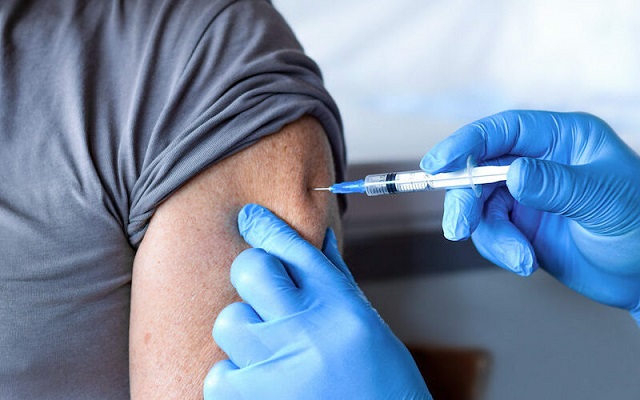
 COVID-192 days ago
COVID-192 days agoTrudeau’s public health agency recommends another experimental COVID booster
-
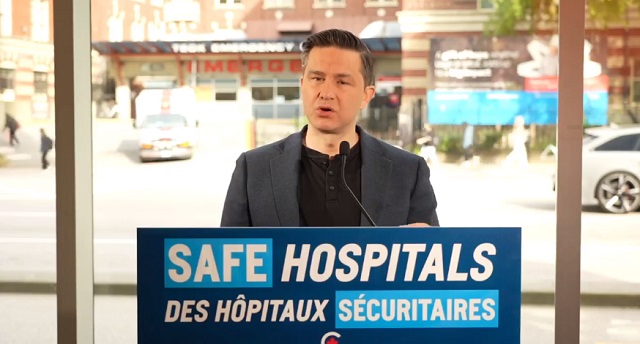
 Addictions2 days ago
Addictions2 days agoPoilievre attacks decriminalization of hard drugs with Safe Hospitals Act
-

 Uncategorized2 days ago
Uncategorized2 days agoRCMP recruitment failure has Alberta advocacy group calling for Provincial Police Service
-
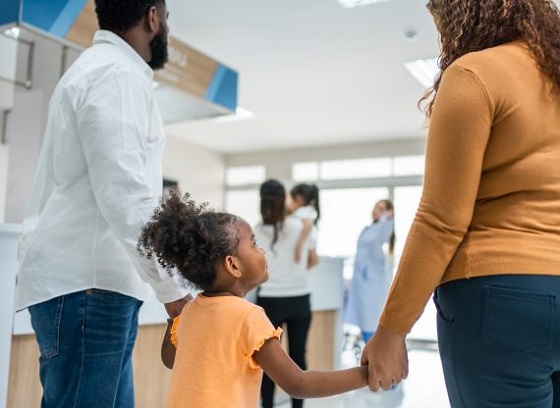
 Alberta22 hours ago
Alberta22 hours agoPharmacist-led clinics improve access to health care: Lessons from Alberta
-
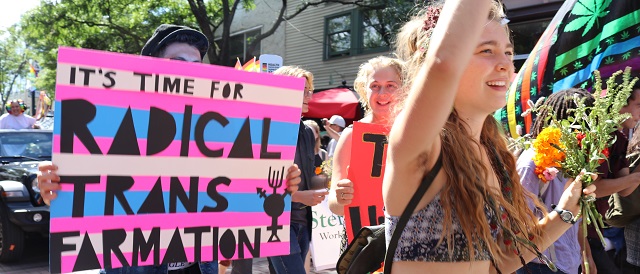
 Health2 days ago
Health2 days agoPrivate Footage Reveals Leading Medical Org’s Efforts To ‘Normalize’ Gender Ideology
-

 Alberta2 days ago
Alberta2 days agoRed Deer Hospital Lottery – Second Chance Early Bird Prize!!!
-

 Alberta18 hours ago
Alberta18 hours ago30 million contraband cigarettes valued at $25 million dollars seized in Alberta
-

 armed forces2 days ago
armed forces2 days agoTrudeau government has spent $10 million promoting DEI in the military as recruitment flounders




